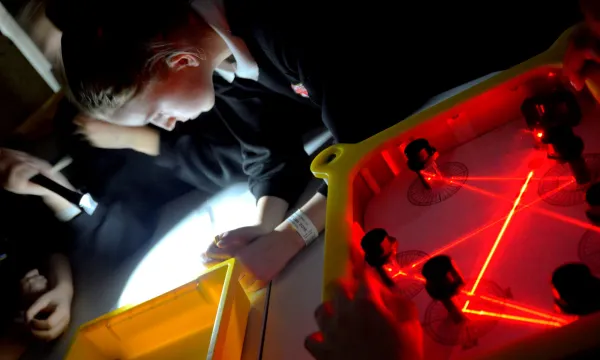
A Trick of the Light
Fascinating exhibits are used to explore absorption, reflection, wavelength, phosphorescence and UV.
Recommended for: KS2 (7-11) | KS3 (11-14) | KS4 (14-16)
Light and Sound
Workshop

Fascinating exhibits are used to explore absorption, reflection, wavelength, phosphorescence and UV.
Light and Sound
Workshop